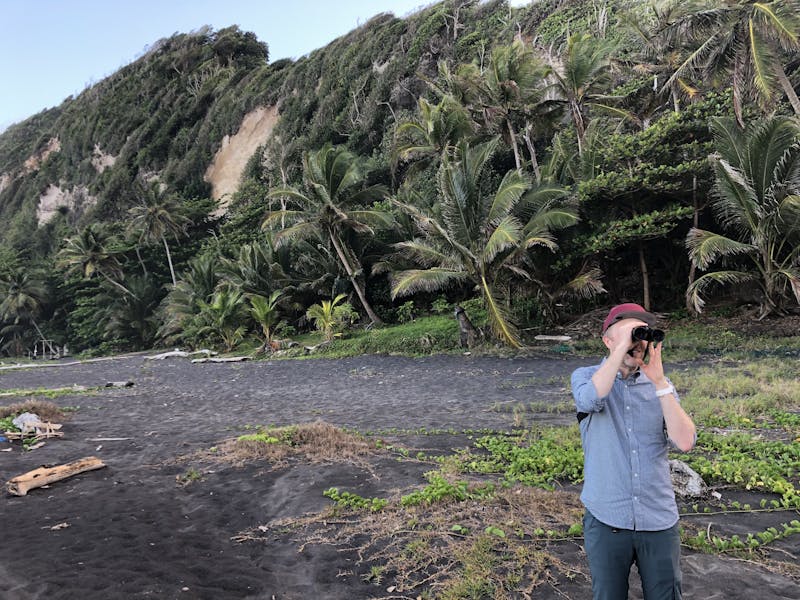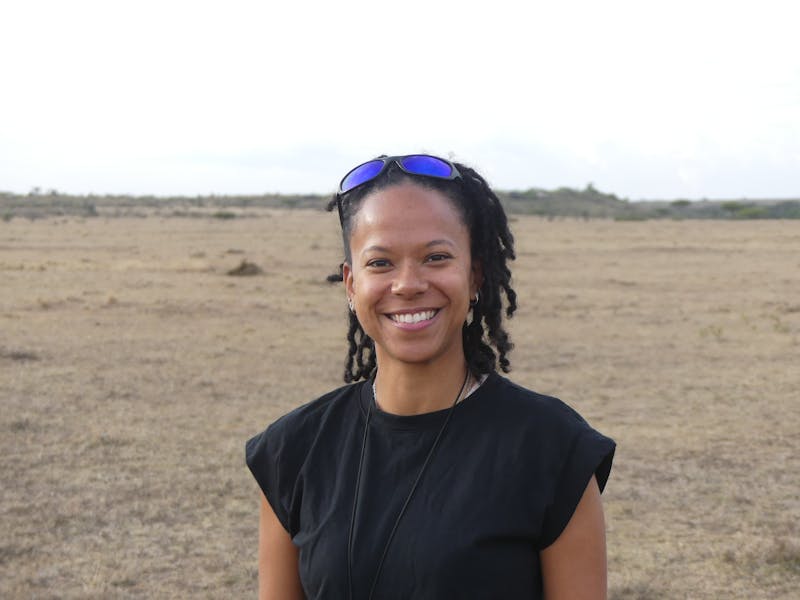Editor’s note: Conservation International is powered by 1,500 people in more than 30 countries — their interests, like their hometowns, are all over the map. In this monthly feature, our experts share some of their favorite things.
Exploring the ‘nature island’

Adam Sedgley in Dominica. Photo courtesy of Sedgley
Dominica has branded itself as the “nature island." And when you take a break from snorkeling with colorful Caribbean reef fish to look up at the verdant mountains extending thousands of vertical feet into the clouds, it's clear why.
On a recent visit, my family and I snorkeled in the appropriately named "champagne reef," which literally bubbles with geothermal activity. We walked in lush tropical forests as endemic anole and ameiva lizards skittered through the leaf litter. With a local guide, I saw 45 species of birds — 14 of which are only found in the Caribbean. Another three are limited to just Dominica or a few adjacent islands. However, the crème de la crème of endemic birds — the critically-endangered Imperial Parrot, which is the largest member of the Amazona genus and one of the few species with the distinction of being immortalized on a national flag — eluded us after waiting for more than four hours in the Syndicate Forest, one of its remaining strongholds.
As an avid birdwatcher I was disappointed. But the sting faded two days later when, while bobbing in the azure water just off the capital city of Roseau, we watched a female sperm whale resting placidly on the surface between her dives. It was a species I never thought I'd see, and Dominica is one of the best places in the world to witness this deep-diving marvel year round.
The celebratory rum punch — made by the owner of the boat charter — tasted especially sweet.
Acting locally to protect nature

Adrienne Cleverly with her family. Photo courtesy of Cleverly
I’m happy to have the opportunity to contribute to global solutions to climate change. But lately I’ve also been thankful for the efforts of local environmental groups in my hometown of Ventura, California.
This summer, toxic algal blooms exacerbated by warmer waters in Southern California have killed scores of dolphins and sea lions. Just this week, while out for a walk, I came across a sea lion who was exhibiting symptoms of poisoning. I called our local marine rescue organization. Its volunteers have been working overtime to mitigate the impacts of this poisoning event and quickly deployed someone to assess the animal and set up a safety perimeter.
Last week, I volunteered with my local Surfrider chapter on a beach clean-up, where we picked up bags of plastic and garbage from a protected estuary. And this weekend, we will be running a fundraiser for our local land trust, which conserves and manages critical watershed areas.
In many places around the world, there are local organizations like these that are staffed by volunteers who — with shoestring budgets — protect wildlife, ensure public safety and conserve important ecosystems. I’ve been so thankful for the work of these local partners and am glad to lend some of my spare time to their efforts.
A call to climate action

Niquole Esters at Mara Naboisho Conservancy, Kenya. Courtesy of Esters
I was just introduced to the powerful spoken word poem, Rise: From One Island to Another, which was written and performed by two Indigenous poets and climate activists — Kathy Jetñil-Kijiner (from the Marshall Islands) and Aka Niviâna (born and raised in Greenland) — and filmed in their home islands.
Created five years ago with stunning videography and music, the poem’s message resonates strongly, especially considering the limited progress we’ve made in supporting communities that are most at risk from the impacts of climate change. Despite being separated by thousands of miles, these two women found a connection with each other, invoking their culture, ancestors and communities — and they brought us along with them on their journey. The poem is a stark reminder that climate change is happening now, and we all have a responsibility to act.
Mary Kate McCoy is a staff writer at Conservation International. Want to read more stories like this? Sign up for email updates. Also, please consider supporting our critical work.